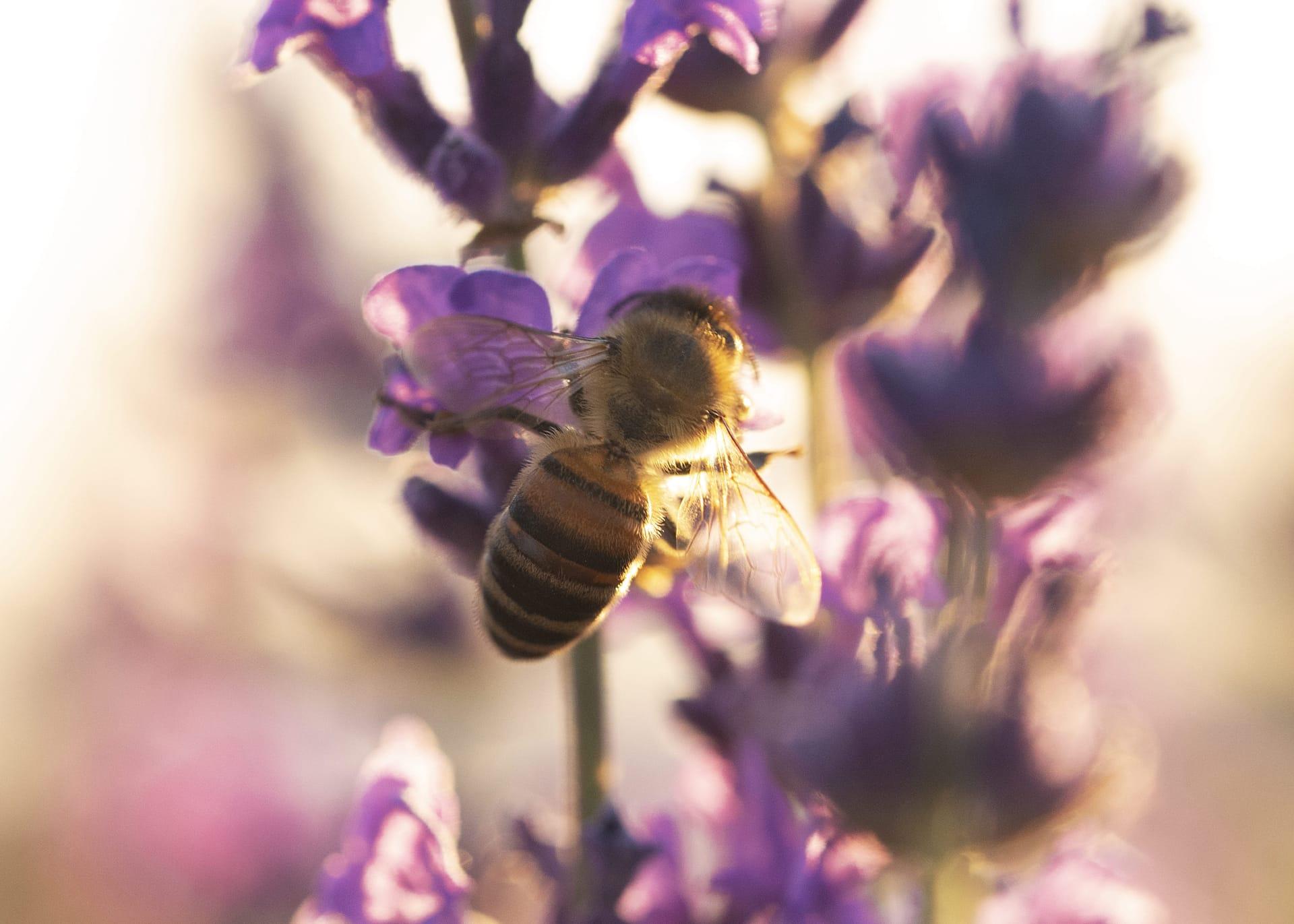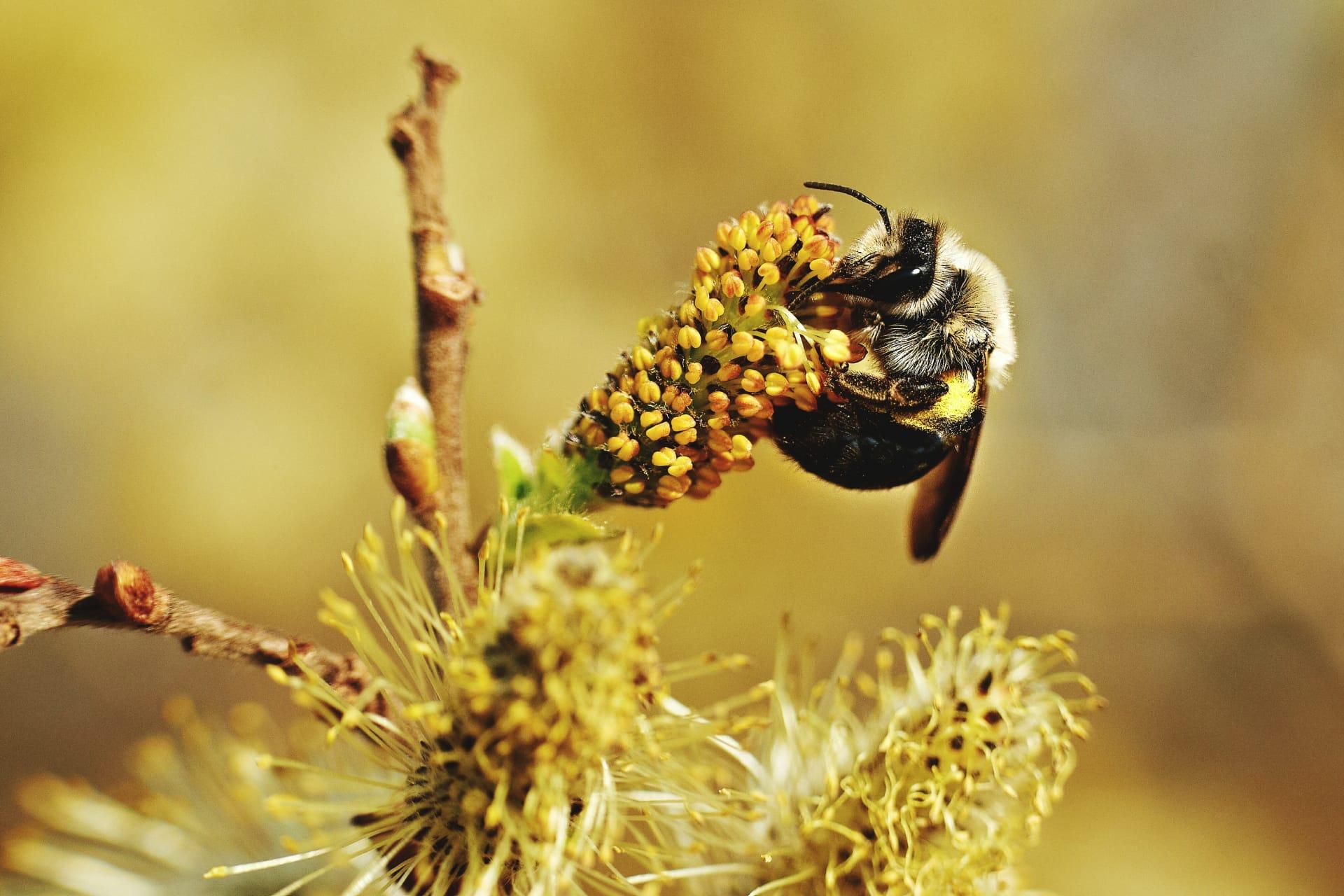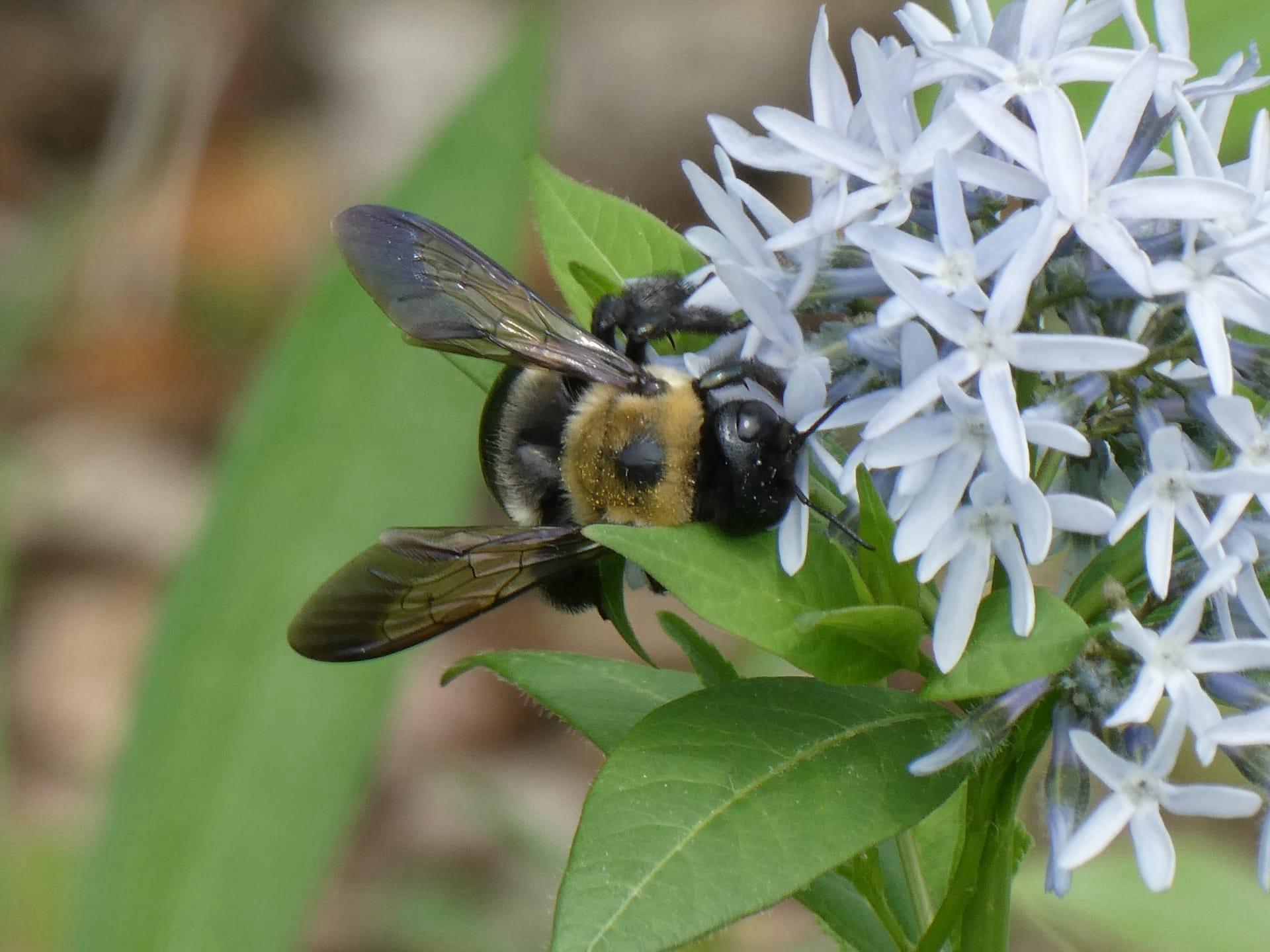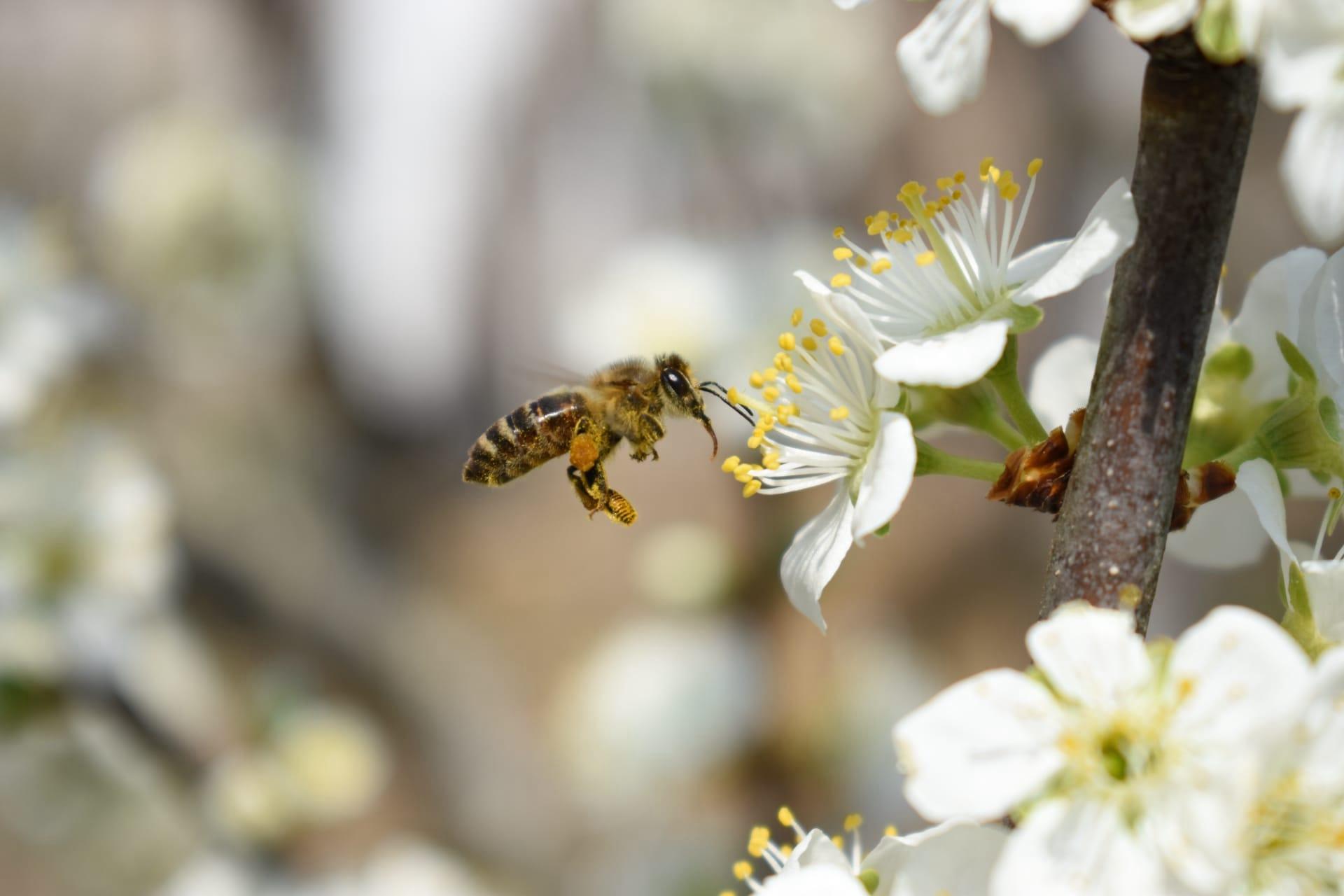1
The Eastern Carpenter Bee (Xylocopa virginica) is quite the flying carpenter, known for its ability to drill into wood to make its home. These bees prefer weathered and unpainted wood, often targeting wooden structures like fences and decks. They carve out perfectly circular holes about 1/2 inch (1.27 cm) in diameter, creating tunnels up to 10 inches (25.4 cm) long. Inside these tunnels, they build individual cells for their larvae, each separated by a wood pulp partition. This intricate architecture is not only a marvel of nature but also showcases their skill in woodworking.
These bees are often mistaken for bumblebees due to their size and coloring, but they have a distinct shiny, black abdomen, which sets them apart. Unlike bumblebees, Eastern Carpenter Bees are solitary creatures. Each female bee is responsible for her own nest, where she lays her eggs. While they might seem menacing due to their size, which can reach up to 1 inch (2.54 cm) in length, they are generally harmless to humans. The males, which often hover around and guard the nest, don't even have stingers. Females do have stingers but rarely use them unless provoked.

2
Eastern Carpenter Bees have a unique role in the ecosystem as pollinators. Their size allows them to carry large amounts of pollen from flower to flower, making them vital for the survival of many plant species. Unlike other bees, they practice a technique called 'nectar robbing,' where they slit the sides of flowers to access the nectar without actually pollinating the flower. This method often leads to less effective pollination, but their sheer size and the volume of flowers they visit still make them crucial pollinators.
The lifespan of these bees is quite interesting. Adult Eastern Carpenter Bees live for about one year. However, most of this time is spent in the larval and pupal stages inside the wooden tunnels. They emerge as adults in late spring, and after a brief period of feeding and mating, the females lay eggs, and the cycle continues. The adults typically die in the late summer, leaving the next generation to overwinter in the tunnels and emerge the following year.

3
Did you know that Eastern Carpenter Bees have a special relationship with certain types of flowers? These bees are particularly adept at buzz pollination, a process where they grab onto a flower and vibrate their bodies at a specific frequency. This vibration shakes loose the pollen, which sticks to their bodies. This method is especially effective with flowers that have tubular shapes or are designed to be pollinated by vibration, making these bees essential for the survival of certain plant species.
Another fascinating aspect of Eastern Carpenter Bees is their communication methods. While they are solitary bees, they still need to communicate, particularly during mating season. They use a combination of body movements, like hovering and darting, and pheromones to communicate. These signals are crucial for establishing territory, attracting mates, and warding off potential rivals. It's a sophisticated system that underscores the complexity of these seemingly simple creatures.

4
Eastern Carpenter Bees have a unique approach to temperature regulation. Unlike other bee species that huddle together for warmth, each bee maintains its own body temperature. They do this by shivering, much like humans do when cold. This ability to regulate their body temperature allows them to be active in cooler temperatures when other bees might be inactive, giving them a unique advantage in foraging and pollination early in the spring.
Interestingly, Eastern Carpenter Bees are also known for their ability to reuse and expand old nests. Females often return to the nests where they were born or take over abandoned nests, enlarging and modifying them for their own use. This behavior not only saves energy and time but also shows an advanced level of spatial awareness and memory, as they navigate and modify the complex tunnel systems within the wood.

5
When it comes to diet, Eastern Carpenter Bees are not very picky. They feed primarily on nectar and pollen from a wide variety of flowers. However, they have a preference for certain types of flowers, particularly those that are blue or purple, as well as those that are easily accessible and have a lot of nectars. This dietary flexibility allows them to thrive in diverse environments, from woodlands to urban gardens.
The presence of Eastern Carpenter Bees can be both beneficial and a nuisance. On the one hand, they play a crucial role in pollinating various plants, contributing to the biodiversity of their ecosystems. On the other hand, their nesting habits can cause cosmetic damage to wooden structures. However, this damage is often superficial and can be mitigated by painting or treating the wood. Understanding and appreciating their ecological role can help us coexist with these fascinating creatures.